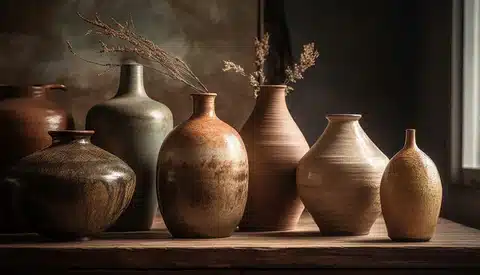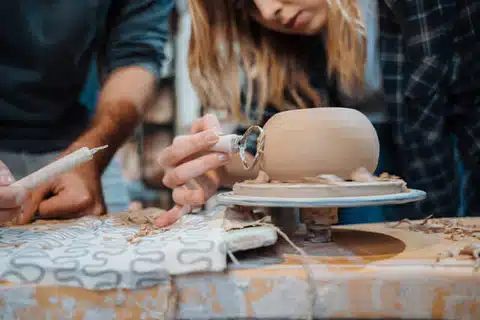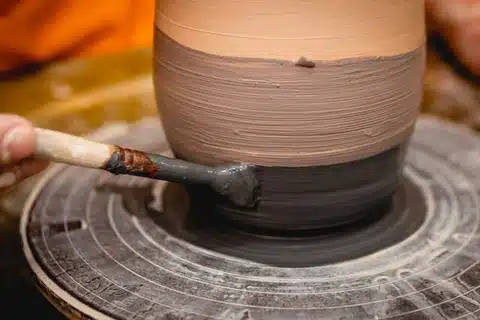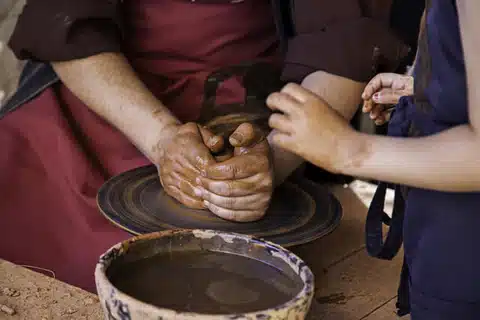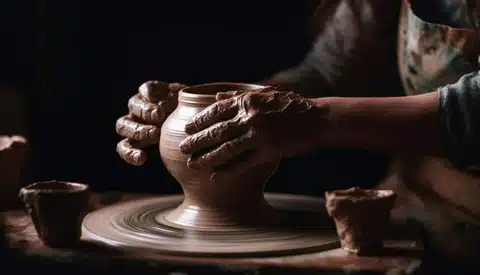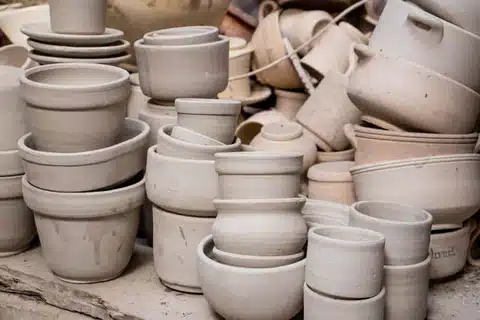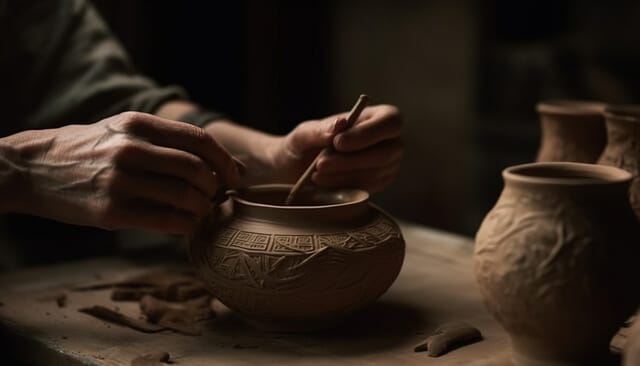Unearthing the History of Pottery From Ancient Times to Present Day
Do you have a pottery piece that captures time within its shape and texture? If so, you’re not alone! Pottery has served as an expression and a practical tool throughout history. Beyond vessels, pottery holds tales of creative exploration, cultural heritage, and artistic revelations. Let’s journey into the captivating history of pottery today!
The Origins of Pottery
Pottery is one of humanity’s most primitive craftsmanship stretching back thousands of years. Archaeologists have unearthed pottery artefacts in various parts of the world, offering glimpses into the ingenuity and creativity of our ancestors. These prehistoric clay vessels were simple yet practical, handcrafted with care and fired in open flames or rudimentary kilns. They often utilised available clay for storing food, water and other necessities.
During those times our forebears developed an array of pottery techniques to mould clay into functional vessels with remarkable skill. Before the invention of the potter’s wheel, pottery was created using techniques such as coiling, pinching and slab construction. Early potters used tools like shells, rocks and wooden paddles to shape and embellish their pottery. In addition to their functional uses, pottery held significance in ceremonial and ritualistic practices, as evident from its presence in burial sites and ancient religious contexts.
The emergence of pottery marked a milestone in human development. It allowed human societies to store surplus food, facilitating settlement and population growth. Pottery vessels also played a role in trade by enabling the exchange of goods between different regions. Moreover, pottery served as a medium for expression and cultural symbolism reflecting the beliefs and values of ancient civilisations.
Pottery in Ancient Civilizations
Pottery became an aspect of artistic craftsmanship as various civilisations flourished.
Mesopotamia, considered the birthplace of pottery, boasts exceptional artistic skills in crafting detailed pieces using the potter’s wheel. The pottery showcases intricate patterns and motifs, providing valuable insights into the daily life, trade, and religious practices of ancient Mesopotamian societies.
Egyptian pottery held both practical and symbolic significance, with Egyptians creating elaborate pottery as offerings to the afterlife. Funerary pottery, known as “ushabti”, were miniature figurines decorated with hieroglyphics and scenes depicting religious beliefs and mythology. Greek and Roman pottery is a harmonious blend of artistry and practicality, with Greek pottery depicting scenes from mythology, history, and everyday life.
Similarly, Greek techniques influenced Roman pottery crucial in daily life, transporting and storing goods across the vast Roman Empire. On the other hand, Chinese pottery boasts a rich history from ancient times. The Chinese were among the first to develop advanced pottery techniques, including glazing methods.
Chinese pottery played a role in cultural exchange along the ancient Silk Road and continues to be highly valued and admired worldwide. Meanwhile, Mesoamerican pottery reflected their cosmology, religious beliefs and everyday life. Both cultures incorporated designs, vibrant colours and unique shapes into their pottery vessels for rituals, ceremonies and daily activities.
In pottery, specifically, mythological figures and symbolic representations were frequently depicted. These artistic expressions provide insights into the worldview of people present at the time. Moving on to pottery traditions, they are as diverse as the continents, each region cultivating distinctive styles and techniques.
From the pottery of the Nok civilisation in West Africa to the exquisite terracotta sculptures of the Benin Kingdom, African pottery embodies a rich cultural heritage passed down through generations — showcasing immense artistic brilliance.
Evolution of Pottery Techniques
The evolution of pottery techniques has been marked by innovation and creativity. Pottery wheels revolutionised the creation process enabling potters to produce symmetrical and refined vessels. Over time, potters have achieved enhanced precision and efficiency.
Throughout history, the development of kilns has seen significant advancement. Initially, kilns were open fires, but over time, they evolved into sophisticated structures allowing better control of firing temperatures. Nowadays, potters have the luxury of using gas and electric kilns that provide regulation, allowing them to explore various firing techniques and consistently achieve their desired outcomes.
Glazing techniques and decorative styles have greatly enhanced the beauty and functionality of pottery throughout the ages. In its early stages, pottery relied solely on the properties of fired clay and remained unglazed — however, the discovery and experimentation with glazes opened up endless artistic possibilities. Ancient civilisations delved into glazing methods, developing single-colour slips, mineral-based glazes, and, eventually, more vibrant and intricate designs. These distinct regional styles emerged as symbols of their cultures, from the lead glazes in ancient Mesopotamia to the renowned cobalt blue glaze during the Qing Dynasty.
With time, pottery craftsmanship continues to evolve with innovative technologies. While traditional techniques are still cherished and preserved, new advancements have expanded possibilities for expression. Potters now have access to electric wheels that streamline pottery-making processes, allowing them more time for creativity and experimentation. Electric and gas kilns also offer temperature control capabilities that enable potters to achieve consistent results while exploring alternative firing methods and different settings.
The art of pottery has evolved, blending wisdom with modern innovation to create a diverse and exciting landscape of pottery craftsmanship.
Final Thoughts
Despite its prevalence throughout so many eras of time, pottery remains a timeless craft. Not only does it create beautiful and functional vessels, but it also provides personal connections with the past like no other art form can. Even while technology and practices change over the years, pottery will remain an essential piece of our history – captivating us with its unique beauty and staying power as we finally answer the age-old question: What happened in these ancient cultures that we haven’t found out? With pottery, this forgotten era continues to thrive like it was just yesterday – as if their stories are only waiting to be told. Let’s celebrate the hard work of those who came before us and appreciate their art in the same light that we cherish our memories years later.
At Terra & Ember, we take our appreciation for pottery to the next level by experiencing the art form completely, feeling it in our hands. Join us at one of our workshops or simply share a studio with us, and let’s go on a trip that’ll bring us back in time and beyond with a beautiful, transcendental creation.

